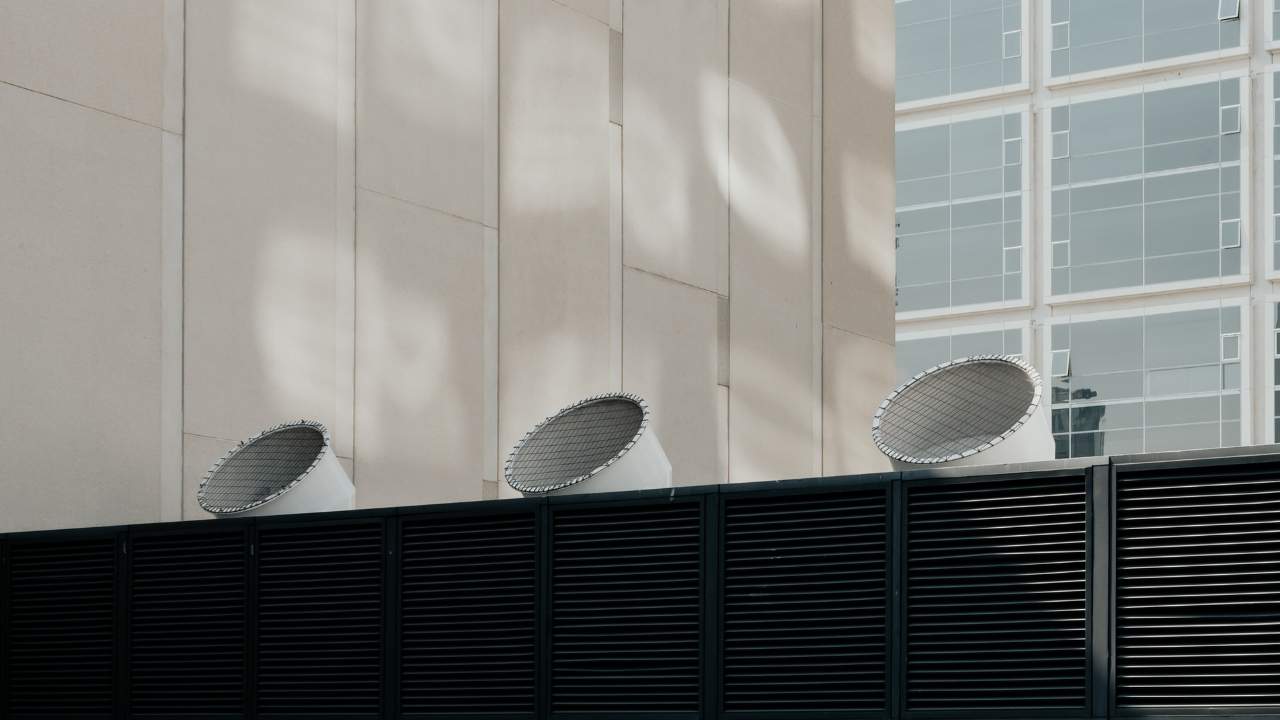Have you ever wondered how does MVHR work to save energy in your home?
Mechanical Ventilation with Heat Recovery (MVHR) systems are the answer. These systems bring in fresh, filtered air while recovering up to 92% of the heat from the air being expelled, helping you maintain a comfortable, energy-efficient environment all year round.
What is MVHR and Why Is It So Energy-Efficient?
Mechanical Ventilation with Heat Recovery (MVHR) is a system designed to tackle the problem of poor ventilation in modern, airtight homes.
It works by bringing in fresh, filtered air while extracting stale, moist air from your home. The clever part? It recovers heat from the outgoing air and transfers it to the incoming air, making sure your home stays warm and energy-efficient.
In fact, MVHR systems can recover up to 92% of the heat that would otherwise be lost through open windows or extractor fans.
This not only reduces energy consumption but also ensures you don’t lose all the warmth in your home when ventilating.
How MVHR Works: A Step-by-Step Process
MVHR systems are designed to run quietly and efficiently, providing continuous ventilation throughout your home. Here’s how they work:
1. Fresh Air Intake
Outdoor air is drawn into the MVHR system and filtered to remove dust, pollen, and other airborne pollutants.
2. Stale Air Extraction
Simultaneously, stale, moist air is extracted from wet rooms like bathrooms, kitchens, and utility areas.
3. Heat Recovery
The extracted air passes through a heat exchanger, where heat is transferred to the fresh incoming air.
This heat recovery process ensures that up to 92% of the warmth from the outgoing air is retained and used to warm the incoming air.
4. Air Distribution
The now-warmed and filtered air is delivered to living spaces (e.g., bedrooms, lounges) through discreet ceiling vents or supply valves.
5. Continuous Air Renewal
The system ensures the air is renewed every 2–3 hours, depending on settings and fan speed, keeping the indoor air quality high and fresh.
How Does MVHR Work to Save Energy in Your Home?
MVHR systems provide numerous benefits beyond just fresh air. Here’s why they’re a game-changer for energy-efficient living:
1. Energy Efficiency

By recovering up to 92% of the heat from outgoing air, MVHR ensures your home stays warm without wasting energy.
This heat recovery significantly reduces the need for additional heating, lowering energy consumption and heating costs.
2. Improved Air Quality
MVHR systems filter incoming air, removing dust, pollen, and pollutants.
It creates a healthier indoor environment, especially for people with asthma, allergies, or other respiratory issues.
3. Reduced Mould and Damp
With constant, controlled ventilation, MVHR prevents moisture build-up and condensation, which can lead to dampness and mould growth.
It helps maintain a dry, healthy environment within your home.
4. Consistent Comfort
By ensuring a steady supply of fresh, filtered air while maintaining a comfortable indoor temperature, MVHR systems enhance the overall comfort of your home.
What Are the Key Differences Between MVHR and Air Conditioning?
MVHR and air conditioning may seem similar since both improve comfort indoors, but they serve very different functions. Here’s how they differ:

Main Function
MVHR:
Focuses on ventilation and heat recovery. It brings in fresh air while retaining heat from outgoing air.
Air Conditioning:
Primarily controls indoor temperature. It cools or heats the air but doesn’t provide fresh air or recover heat.
Fresh Air Supply
MVHR:
Continuously supplies fresh, filtered outdoor air, improving indoor air quality.
Air Conditioning:
Recirculates existing indoor air, which can become stale if not paired with proper ventilation.
Heat Recovery
MVHR:
Recovers up to 92% of heat from outgoing air, making it highly energy-efficient.
Air Conditioning:
Does not recover heat. It may even lead to energy loss if used excessively.
Cooling Ability
MVHR:
Limited cooling via a summer bypass feature, but not designed for cooling.
Air Conditioning:
Actively cools the air, making it ideal for hot climates or summer months.
Energy Use
MVHR:
Operates with low energy consumption, helping reduce heating bills.
Air Conditioning:
Typically uses more electricity, especially in summer, increasing energy costs.
Best For
MVHR:
Ideal for airtight, energy-efficient homes where heat retention and ventilation are priorities.
Air Conditioning:
Best for homes needing strict temperature control, particularly in hot weather.
Is MVHR the Right Solution for Your Home?
MVHR systems are ideal for:
New builds and self-builds
These homes are often built airtight, making MVHR the perfect solution for ventilation and energy efficiency.
Homes undergoing major renovations
If you’re already updating your home, installing an MVHR system during renovation can be an excellent choice.
Homes that need to meet building regulations
In the UK and Ireland, MVHR systems meet the latest ventilation standards and building codes, ensuring your home is up to code.
MVHR can also be retrofitted into older homes, though it depends on factors like layout and the level of insulation.
Conclusion
So, to conclude, by providing continuous ventilation, recovering up to 92% of heat, and ensuring optimal air quality, MVHR systems offer an energy-efficient solution for modern homes.
They not only help maintain a comfortable and healthy indoor environment but also reduce heating costs and improve energy efficiency.
Whether you’re building a new home, renovating an existing one, or looking to upgrade your ventilation system, MVHR is a smart investment for both comfort and energy savings.
Ready to improve your home’s energy efficiency with MVHR?
Contact Vent Solve today to learn how our expert solutions can help you save energy and enhance indoor comfort!
Frequently Asked Questions
1. What does MVHR stand for, and how does it work?
MVHR stands for Mechanical Ventilation with Heat Recovery. It works by extracting stale, moist air from your home and recovering the heat from that air to warm up fresh, filtered outdoor air being brought into your home. This process helps improve ventilation while maintaining a comfortable indoor temperature and reducing energy consumption.
2. How does MVHR work to save energy in your home?
MVHR systems can recover up to 92% of the heat from the outgoing air, which helps reduce the need for additional heating. This can lead to significant energy savings and lower heating costs, especially in airtight, energy-efficient homes.
3. Is MVHR suitable for all types of homes?
MVHR systems are ideal for modern, airtight homes, including new builds and those undergoing major renovations. They can also be retrofitted into older homes, but this depends on factors like insulation levels and the home’s layout. It’s best to consult an expert to determine if MVHR is the right fit for your home.
4. How does MVHR improve indoor air quality?
MVHR systems continuously supply fresh, filtered outdoor air, removing dust, pollen, and other airborne pollutants. This improves the air quality in your home, which is particularly beneficial for individuals with asthma, allergies, or other respiratory conditions.
5. Can an MVHR system cool my home?
While MVHR systems are not primarily designed for cooling, they feature a summer bypass function that can help provide some cooling in warmer months. However, if you’re looking for consistent cooling, an air conditioning system would be more effective.
6. How often does an MVHR system need maintenance?
MVHR systems are low maintenance, but regular checks are recommended to ensure optimal performance. This includes changing filters every 6–12 months and ensuring that the ducts and heat exchanger remain clean. It’s always a good idea to have a professional service the system annually.


